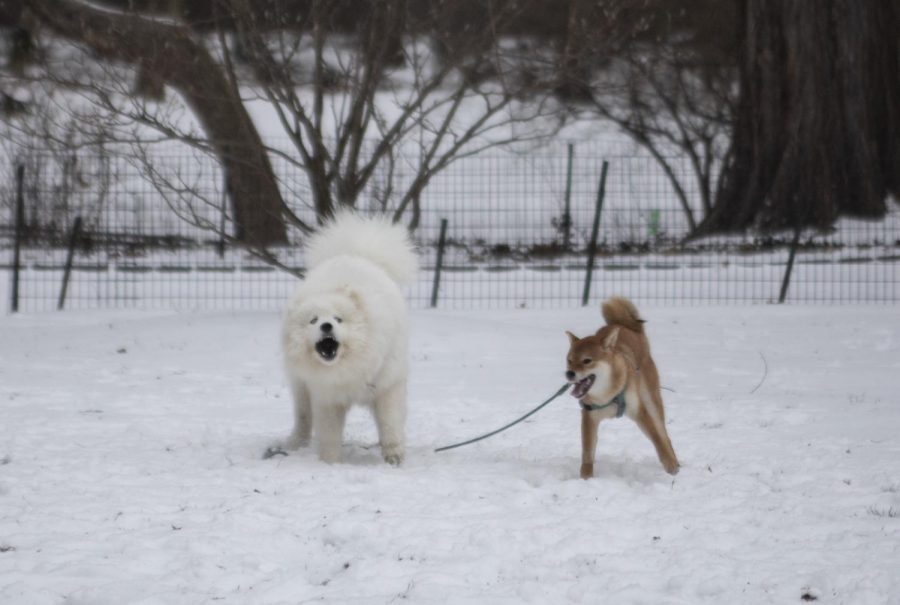What We’ve Learned from Wag and Other Apps
We’ve all done it or know someone who has. Dog walking has become a go-to job for college students in need of some extra cash. It seems like an easy job, but in reality, walkers need to be vigilant, responsible and physically active. What I’ve learned from my fair share of dog walks is that one can never be too experienced.
Once I lost track of an older dog that was both deaf and blind, and before I knew it, he had slipped through the fence of his own backyard and was out wandering the streets. Thankfully, this wasn’t the first time she had run away, and when I contacted the owner he was unfazed and helped me track her down.
Another time, I forgot to bring a baggie with me and had to steal a newspaper in plastic wrap from someone’s stoop to pick up after the dog. (Failure to remove canine waste can cost you $250 in New York City.)
Dog walking has recently become an extremely competitive market. Apps like Wag and Rover appeal to walkers because they find clients for you. “I think these apps are so popular because people in major cities don’t have the resources or time to take care of their pets,” Zelie Anner, Fordham College at Lincoln Center (FCLC) ’20 and former Rover walker, said. “Most of the clients have tons of money — it’s a matter of convenience rather than cost.”
If you’re looking for a part-time job this semester and are considering dog walking, here are some tips for you from fellow walkers:
Be vigilant about what’s on the sidewalk.
“One time when I was walking a dog in Hell’s Kitchen by the river walk, he got a cut on its paw pad and left bloody paw prints all over the floor. I had to make sure the cut stopped bleeding. I called the owner and explained what happened, and cleaned up the floor. The bleeding stopped super quickly and the owner was really understanding that freaky things like this happen. The dog didn’t even seem to notice, which I’m glad about because then it means it wasn’t super painful. I actually ended up walking the dog again the next week when it was all bandaged up.”
– Katie Coombs, FCLC ’19
Be prepared to contact the owner.
“One time I arrived at an apartment ready to walk a dog, and there was no dog in the apartment. I looked everywhere and was scared that the dog was hiding from me or that something bad had happened and maybe it had jumped out of a window, but it turns out the owner booked the walk for the wrong day.”
– Maria Sepulveda, FCLC ’19
Bring water.
“I always bring water because the walks can get physically demanding sometimes, and it’s important to stay hydrated.”
– Maria Sepulveda, FCLC ’19
Check the fit on the harness or collar before heading outside.
“I was walking a husky, he was a puppy. The owner was really nice, gave me concise instructions, and wasn’t being crazy about it either. He had a harness for his new puppy, no older than a year. It wasn’t small enough for the dog, so three to four times during the walk he got out of it. I had to tackle him. It just looked around, didn’t run away from me, but when I went to grab him he freaked out. It was very stressful. I wasn’t sure whether to turn back home and end the walk early. I didn’t want to do that because if you end a walk early enough times they suspend you. At one point there was a lady that freaked out because she saw the dog was off the leash.”
– Luke Scales, Brooklyn College ’17
Get out there in the winter.
“In the winter, don’t be shy to go out — people always want their dogs to be walked. So bundle up. No one else is out when there’s snow on the ground.”
– Luke Scales, Brooklyn College ’17
Consider dog sitting.
“I loved seeing dogs, but it took more out of my schedule than it was worth. Sometimes I would have to walk 20 minutes, walk a dog for $12, then walk 20 minutes back. Dog sitting was better. It’s really hard to balance with school. I would recommend Wag for walks and Rover for overnights only if you can manage that kind of extra responsibility.”
– Zelie Anner, FCLC ’20
Get to know your client.
“When I first got to Fordham, I wanted to make some extra money, so I signed up with Wag. There was this adorable pomeranian from the Trump Towers that the lady wanted walked several times a day and it seemed weird. She looked only a few years older than me and she just gave me her dog while she was doing face masks or something. Like why couldn’t you take the elevator down and do it yourself? And the doormen would always tell me stories about how that dog eats better than we do.
So I get a real job as a waitress eventually and it takes me a minute to delete the app, and I’m still getting requests from this lady. I’m very curious as to what she does because I want to have that amount of money in five years. So I google her name and there’s a Wikipedia page for her whole family. Turns out they’re the richest family in Turkey, ranked by Forbes, and they’re worth about $20-30 billion. I totally felt like in that scene from Forrest Gump where he says ‘Dang it! You mean I’m sitting next to a goddamn millionaire? Well I’ll be.’ I guess my best advice is establish a relationship with the customer. If you’re likable and reliable, they will call you back every time.”
– Helen Kollarik, FCLC ’20






